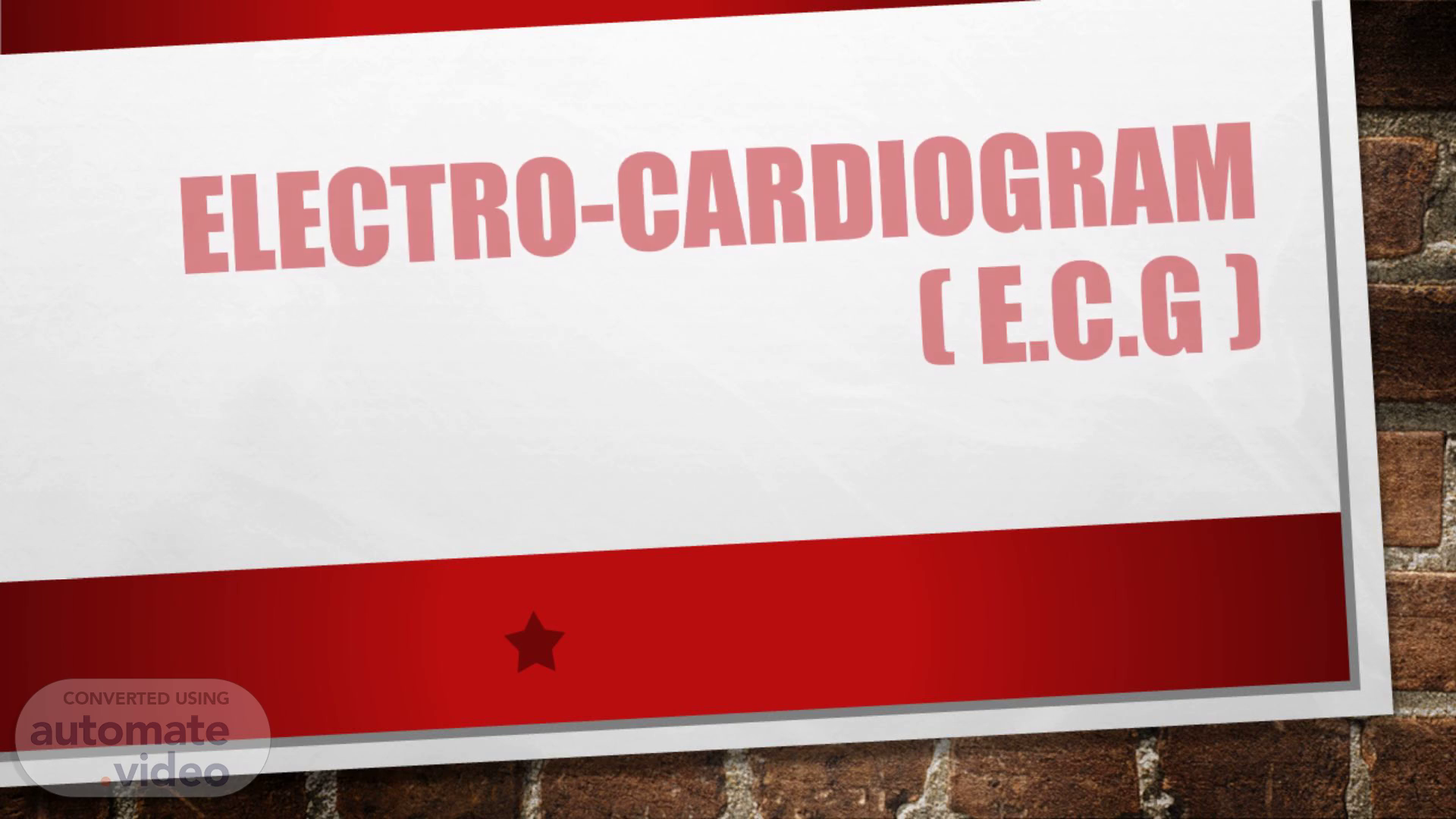
Electro-cardiogram ( e.c.g )
Scene 1 (0s)
Electro-cardiogram ( e.c.g ).
Scene 2 (6s)
What is e.c.g?. Electrocardiography is the process of producing an electrocardiogram, a recording of the heart's electrical activity through repeated cardiac cycles. It is an electrogram of the heart which is a graph of voltage versus time of the electrical activity of the heart using electrodes placed on the skin..
Scene 3 (23s)
What can be detected through ecg?. It can be used to investigate symptoms of a possible heart problem, such as chest pain, palpitations (suddenly noticeable heartbeats), dizziness and shortness of breath. An ECG can help detect: arrhythmias – where the heart beats too slowly, too quickly, or irregularly..
Scene 4 (39s)
Components of ecg…. P-wave – qrs complex – t-wave.
Scene 5 (47s)
P WAVE. IT IS THE FASTEST KIND OF SIESMIC WAVE AND THE FIRST TO ARRIVE AT THE SIESMIC STATION.. (SENSOR) P WAVES CAN TRAVEL THROUGH THE INTERIOR OF THE BODY. CONTRACTION OF THE ATRIUM.
Scene 6 (0s)
QRS COMPLEX. The QRS complex is the ventricular contraction (systole) consisting of the Q wave, which is the first negative deviation, followed by the R wave, a positive (upward) deviation. Any negative deflection following immediately after the R portion is termed the S wave..
Scene 7 (1m 14s)
T WAVE. T wave represents the repolarization of the ventricles. The interval from the beginning of the QRS complex to the apex of the T wave is referred to as the absolute refractory period. The last half of the T wave is referred to as the relative refractory period or vulnerable period..
Scene 8 (1m 30s)
PMS OF ECG. 1. Clean the ECG machine and its accessories regularly. 2. Check the ECG machine for any loose connections or wires. 3. Check the ECG machine for any signs of wear and tear. 4. Check the ECG machine for any signs of corrosion. 5. Check the ECG machine for any signs of overheating. 6. Check the ECG machine for any signs of electrical interference. 7. Check the ECG machine for any signs of software or hardware malfunction..
Scene 9 (1m 54s)
PMS OF ECG. 8. Check the ECG machine for any signs of dust or dirt accumulation. 9. Check the ECG machine for any signs of moisture or water damage. 10. Check the ECG machine for any signs of physical damage. 11. Check the ECG machine for any signs of improper calibration. 12. Check the ECG machine for any signs of improper operation. 13. Check the ECG machine for any signs of improper storage. 14. Check the ECG machine for any signs of improper use. 15. Check the ECG machine for any signs of improper maintenance..
Scene 10 (2m 21s)
PROBE TYPE,CALIBRATION AND PARAMETERS OF ECG MACHINE…,.
Scene 11 (2m 29s)
E.C.G PARAMETERS. 1 Box: 300 bpm 150 bpm 2 Boxes: 100 bpm 3 Boxes: 75 bpm 4 Boxes: etc. . .......
Scene 12 (2m 43s)
HANDS ON PMS AND CALIBRATION OF ECG MACHINE.. 1040/PATIENT SIMULATOR /DEFIB ANALYZER CLEANING MATERIALS( RUGS,DISINFECTANT SOLUTION,WIPE OUT) PMS FORM’S PARAMETERS 30-60-120-240 +-10% TOLERANCE.